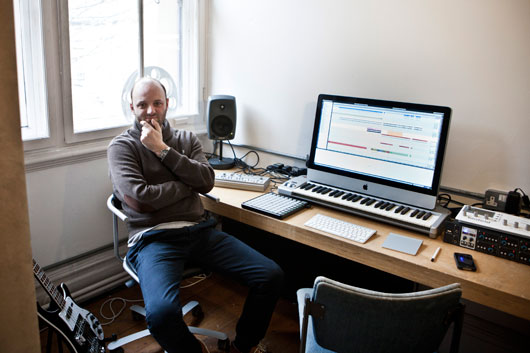In the Studio: Andy Stott
Listening to Andy Stott‘s distinctive brand of dark and sludgey dub-techno, one might imagine that […]
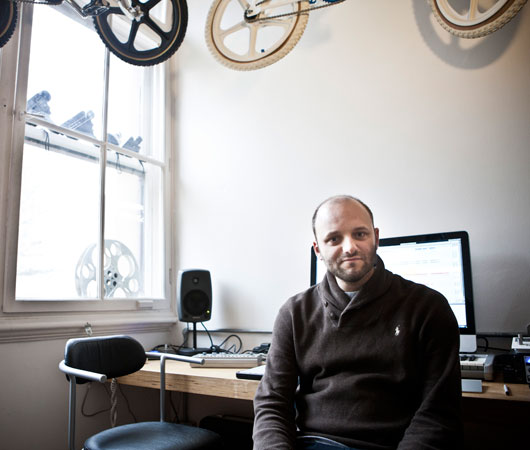
Listening to Andy Stott‘s distinctive brand of dark and sludgey dub-techno, one might imagine that the Manchester producer crafts his work in a lightless bunker or some dank, cobweb-strewn studio full of esoteric keyboards with giant dials—basically, a place with a proper mad-scientist vibe. As it turns out, the truth is far less ominous. Until recently, Stott could be found piecing together his dense tracks in the dining room of his apartment, but just a few weeks ago, he set up shop in the corner of a friend’s photography studio. Considering the sounds found on the Manchester producer’s breathtaking pair of 2011 EPs, We Stay Together and Passed Me By, and now the ambitous Luxury Problems full-length, we were understandably curious to find out more about Stott’s process and jumped at the chance to take a look around his new space.
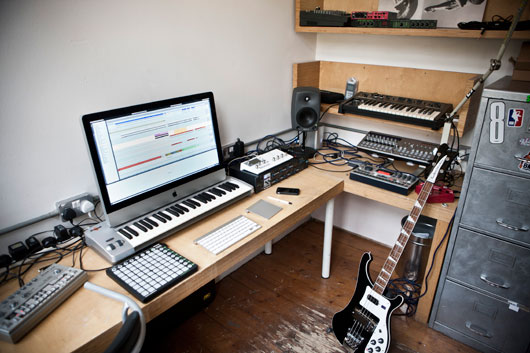
XLR8R: Where exactly is your studio located?
Andy Stott: My mate Mat is a photographer and I rent a little section of his studio space, which is really handy.
And that’s in Manchester?
Yeah, right bang in the middle.
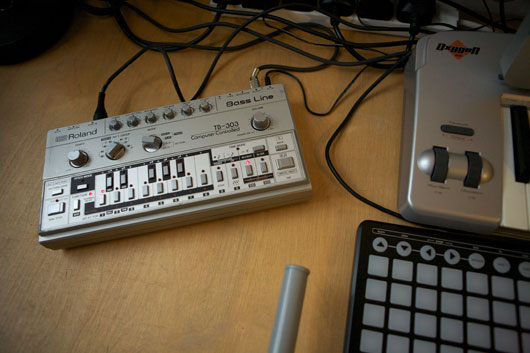
And how long have you been in that particular space?
Not long at all, just over a month. Before that, I was just writing tunes in the dining room at home.
With less gear?
No. [laughs] Even with records as well. I’d get a new piece of gear and I’d say to my partner, “I’m just going to step out,” and she’d ask what was going on, and then I’d come back with a new unit and she’d be like “Where’s that going to go?!” [laughs] It got beyond a joke, and we have a three-month-old boy now, so it just wasn’t practical [to keep my studio there].
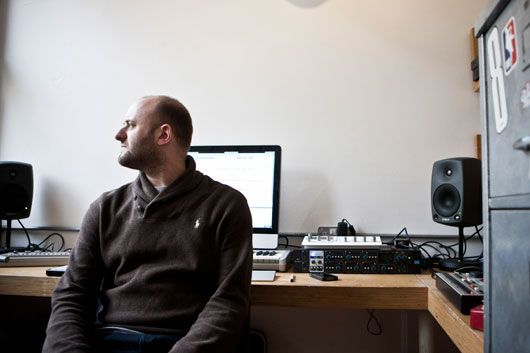
Do you like that better, having a specific place to go to work on music?
I think so. It puts you in a different mindset. You have no interruptions, and you’re not distracting anyone—which was always in the back of my mind when I was working at home—and nobody is distracting you. I think it’s really important to have somewhere specific to go, especially when you’re paying for it, it makes you use it. [laughs] Joking aside, it’s been really good to have a space specifically for the purpose of making music.
How long have you had the Machinedrum and what do you usually use it for?
I haven’t even had that 12 months, actually. I use it like you would use any other drum machine, but you just get so much more control with every sound on it. It’s really good for bottom end. It’s really punchy. It is pretty much the master, everything runs through that.
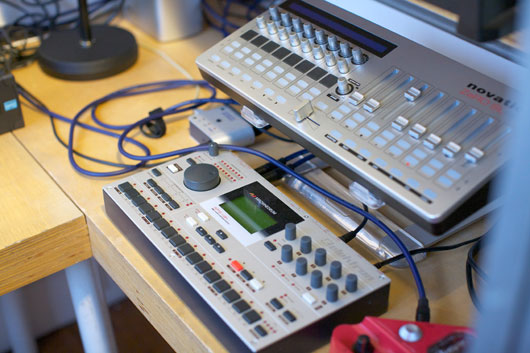
How long have you been putting the rest of the pieces together? You have some vintage units—would you consider yourself a collector?
Not at all. I’ve got some bits scattered about here and there and other ones that people have borrowed. Miles from Demdike Stare, he’s got my SH-101, which I’ve been asking for back—I think he’s had it for nearly two years now. All of sudden, I’ve felt like I wanted to use it, so I’ve been trying to get it back [from him]. But the SH-09 is his actually, so we’re trading off. And the SH-09 has started doing some funny things since I’ve had it, so I don’t think he’ll be too pleased about that. [laughs]
It looks like the only monitors you have are those small Genelecs?
That’s it.
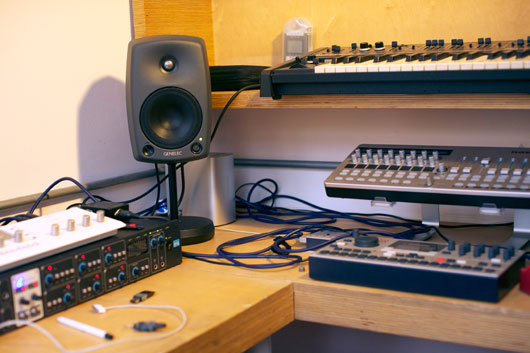
Your productions are so bass-heavy though, how can you gauge the low end on speakers of that size?
[laughs] The way they’re set up, I just have them right. Before I moved into this studio, and I was using them in the dining room at my home, I’d have to stand in a certain place to hear the bass. But now, I just have to roll back a little bit in the chair and I can hear exactly what’s going on. I’ve got my eye on a sub, but I don’t know if that’d be good, especially when Mat [who I share the studio with] has clients over. But I love those monitors, they make such a difference.
Do you do a lot of field recording?
I wouldn’t say I do a lot, but I’ve done some and I’m definitely going to do more. A lot of the stuff that was done on We Stand Together and Passed Me By—and even Luxury Problems—was done on my iPhone. But now, I’ve got a Zoom field recorder and I’m going to go out and hopefully get some nice crunchy stuff. With the phone, it’s so easy, because your phone is always with you. Especially when I was in London and on the underground, there was some really good stuff down there.
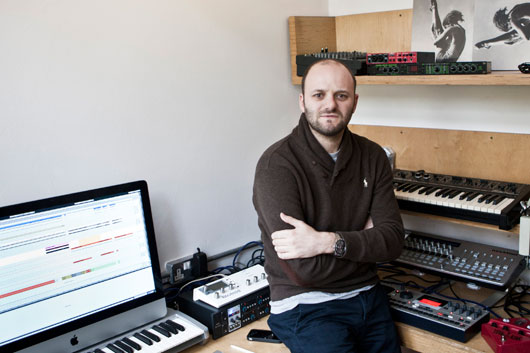
How do you usually process those sounds? In the Machinedrum?
No, those just go into the computer and I mess with them in Ableton.
Are you usually just using the stock Ableton tools or do you have any third-party plug-ins that you like?
I just have one [third-party] plug-in, the Slate Digital VTM. It’s a reel-to-reel tape emulator. But before that, I’d build little things with the FX in Ableton. That’s nice, because I can just save them and go back to those settings at the drop of a hat to adjust them [if I needed]. That’s what I love about Ableton, you have a fair bit of freedom to build your own [signal chain].
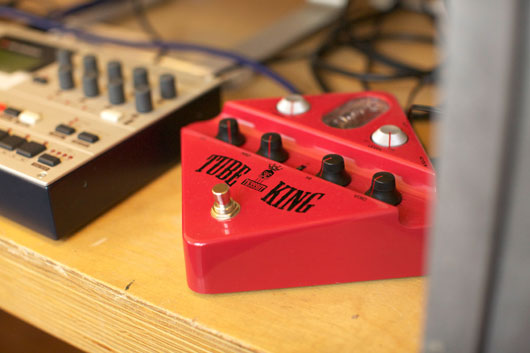
Was that the same approach you took with the vocals on Luxury Problems?
Yeah, that was all in Ableton.
And the vocalist [Alison Skidmore] recorded those on her own, without any music to go by, and then sent them to you?
Yeah. There’s a little thing in the background—I don’t know if you can hear it on the album—but on the pure, dry recordings that I got sent, you can hear a little metronome in the background. I told Alison to just do what she was going to do and not think about it, and she sent me some beautiful things that were already really layered before I even did any tricks or anything.
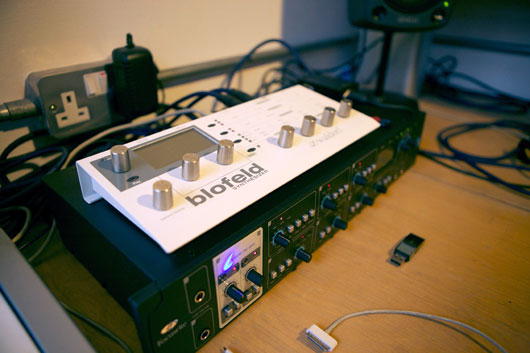
How long does that process take for you, to make patterns out of those raw tracks?
Some of them, you get [the tracks] and there’s not a lot to do. I’ll just take the section I want and have a little mess around with it, and then I’ll sit and let it loop for a while and see if anything [about it] annoys me. It’s a lot of taking little sections and butting them up to other sections. Sometimes, I’ll get a feeling that something is missing, and then I’ll scroll through the file with a fine-tooth comb and try to find something in there that would fit. [Once you have the patterns], then you’ve got to treat everything and make it sound cohesive.
Is there any kind of equipment you think is currently missing from your studio, or are there any improvements you’d like to make?
A Minimoog would be nice; a Voyager would be really nice. I’ve got a Vermona reverb unit on the way, and I’ve been looking at the Roger Linn and Dave Smith Tempest, but I can’t make my mind up. So, at the minute, I’m keeping my eye out for an original LinnDrum and that’s about it. It’s just that financially, I have to be realistic. [laughs]
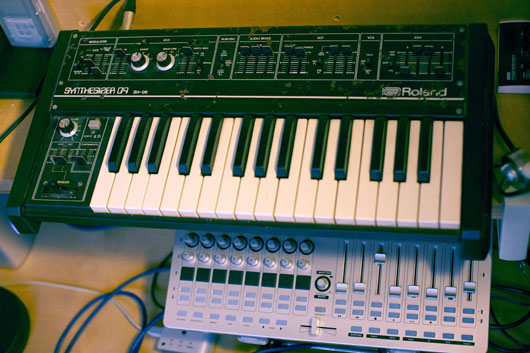
So you’re looking to add more analog equipment than anything digital?
Well, I started off using Reason, which I still use actually. And through listening to other material and stuff that I was trying to do early on, what I was doing just didn’t sound like what was on those records [that I wanted to sound like]. There is definitely a difference between digital and analog, and I think I’m getting to the point where I just want that sound. I don’t want to mess about trying to emulate it with software.
And do you like the physical aspect of analog too—the knob turning and all that?
There’s just something about that feeling, of really being hands-on. [For me,] it’s just the best way to work.
